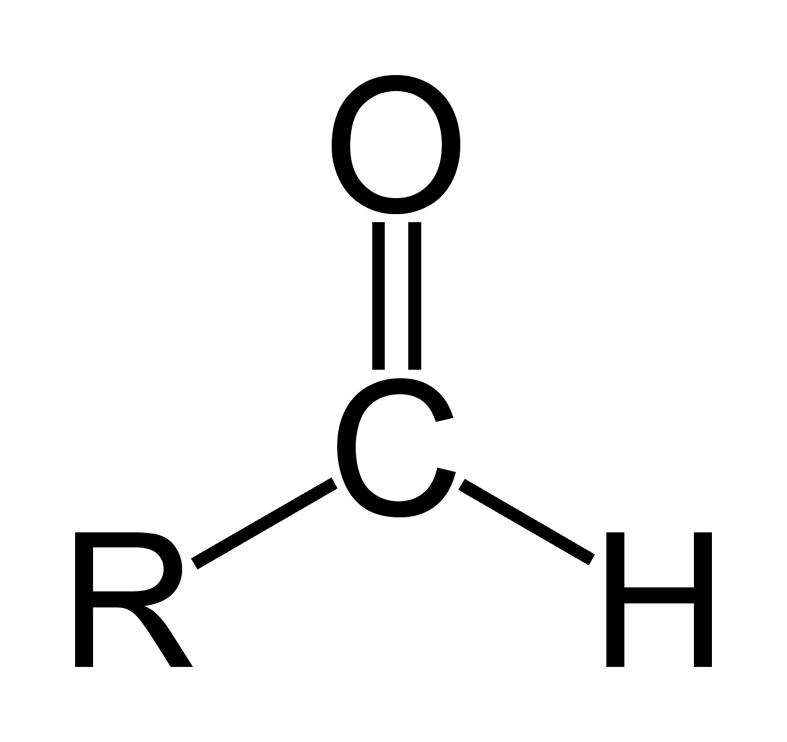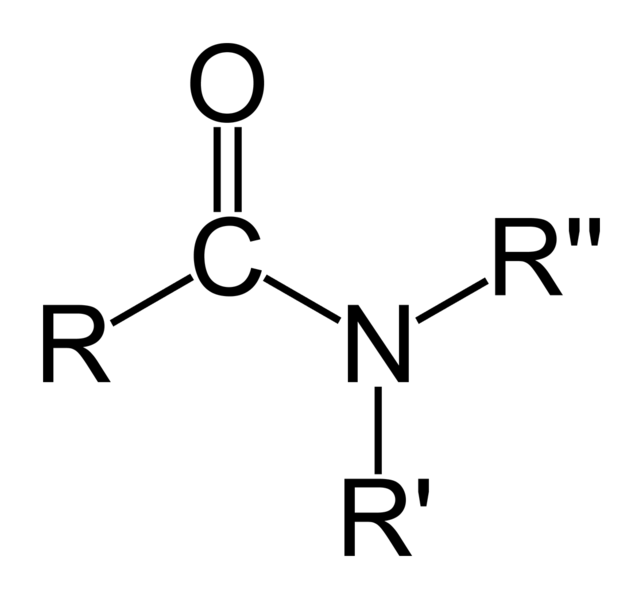Carbonyl

Overview
In organic chemistry, a carbonyl group is a functional group composed of a carbon atom double-bonded to an oxygen atom : C=O.
The term carbonyl can also refer to carbon monoxide as a ligand in an inorganic or organometallic complex (a metal carbonyl, e.g. nickel carbonyl); in this situation, carbon is triple-bonded to oxygen : C≡O.
The remainder of this article concerns itself with the organic chemistry definition of carbonyl.
Carbonyl compounds
A carbonyl group characterizes the following types of compounds (where -CO denotes a C=O carbonyl group):
| Compound | Aldehyde | Ketone | Carboxylic acid | Ester | Amide | Enone | Acyl chloride | Acid anhydride |
| Structure |  |
 |
 |
 |
 |

| ||
| General formula | RCHO | RCOR' | RCOOH | RCOOR' | RCONR'R'' | RC(O)C(R')CR''R''' | RCOCl | (RCO)2O |
Other organic carbonyls are urea and carbamates. Examples of inorganic carbonyl compounds are carbon dioxide, carbonyl sulfide and phosgene
Reactivity
Oxygen is more electronegative than carbon, and thus pulls electron density away from carbon to increase the bond's polarity. Therefore, the carbonyl carbon becomes electrophilic, and thus more reactive with nucleophiles. Also, the electronegative oxygen can react with an electrophile; for example a proton in an acidic solution or other Lewis Acid.
The alpha hydrogen in a carbonyl compound is much more acidic (~1030 times more acidic) than a typical CH bond. For example the pKa values of acetaldehyde and acetone are 16.7 and 19, respectively.[1]
Amides are the most stable of the carbonyl couplings due to their high resonance stabilization between the Nitrogen-Carbon and Carbon-Oxygen bonds.
Carbonyl groups can be reduced by reaction with hydride reagents such as NaBH4 and LiAlH4, and by organometallic reagents such as organolithium reagents and Grignard reagents.
Other important reactions include:
- Wolff-Kishner reduction
- Clemmensen reduction
- Conversion into thioacetals
- Hydration to hemiacetals and hemiketals, and then to acetals and ketals
- Reaction with ammonia and primary amines to form imines
- Reaction with hydroxylamines to form oximes
- Reaction with cyanide anion to form cyanohydrins
- Oxidation with oxaziridines to acyloins
- Reaction with Tebbe's reagent and phosphonium ylides to alkenes.
- Perkin reaction
- Tishchenko reaction
- Aldol condensation
- Cannizaro's reaction
α,β-Unsaturated carbonyl compounds
α,β-Unsaturated carbonyl compounds are an important class of carbonyl compounds with the general structure Cβ=Cα−C=O. In these compounds the carbonyl group is conjugated with an alkene (hence the adjective unsaturated), from which they derive special properties. Examples of unsaturated carbonyls are acrolein, mesityl oxide, acrylic acid and maleic acid. Unsaturated carbonyls can be prepared in the laboratory in an aldol reaction and in the Perkin reaction. The carbonyl group, be it an aldehyde or acid, draws electrons away from the alkene and the alkene group in unsaturated carbonyls are therefore deactived towards an electrophile such as bromine or hydrochloric acid. As a general rule with unsymmetric electrophiles hydrogen attaches itself at the α position in an electrophilic addition. On the other hand, these compounds are activated towards nucleophiles in nucleophilic addition.
Spectroscopy
- Infrared spectroscopy: the C=O double bond absorbs infrared light at wavenumbers between approximately 1600–1900 cm−1. The exact location of the absorption is well understood with respect to the geometry of the molecule. This absorption is known as the "carbonyl stretch" when displayed on an infrared absorption spectrum.[2]
- Nuclear magnetic resonance: the C=O double-bond exhibits different resonances depending on surrounding atoms, generally a downfield shift. The 13C NMR of a carbonyl carbon is in the range of 160-220 ppm.
See also
Further reading
- L.G. Wade, Jr. Organic Chemistry, 5th ed. Prentice Hall, 2002. ISBN 0-13-033832-X
- The Frostburg State University Chemistry Department. Organic Chemistry Help (2000).
- Advanced Chemistry Development, Inc. IUPAC Nomenclature of Organic Chemistry (1997).
- William Reusch. VirtualText of Organic Chemistry (2004).
- Purdue Chemistry Department [1] (retrieved Sep 2006). Includes water solubility data.
- William Reusch. (2004) Aldehydes and Ketones Retrieved 23 May 2005.
- ILPI. (2005) The MSDS Hyperglossary- Anhydride.
References
ca:Carbonil cs:Karbonylové sloučeniny da:Carbonylgruppe de:Carbonylgruppe et:Karbonüülrühm eo:Karbonila grupo ko:카보닐기 it:Carbonile he:קרבוניל nl:Carbonylgroep no:Karbonyl sk:Karbonylová skupina uk:Карбонільна група